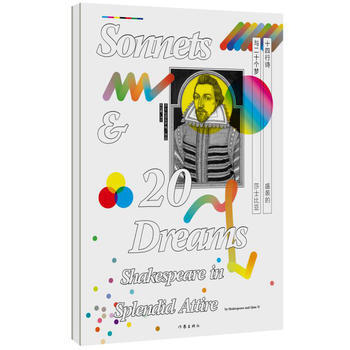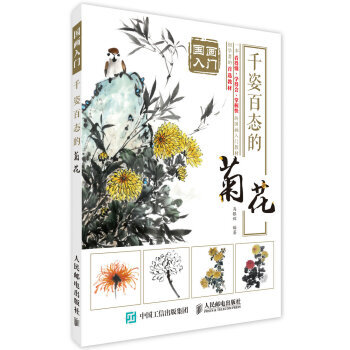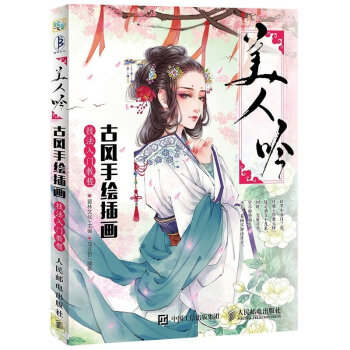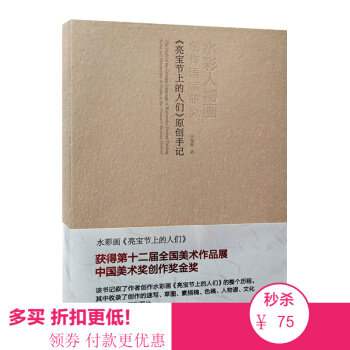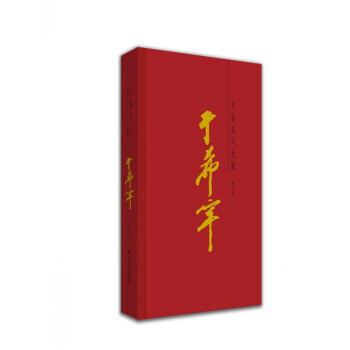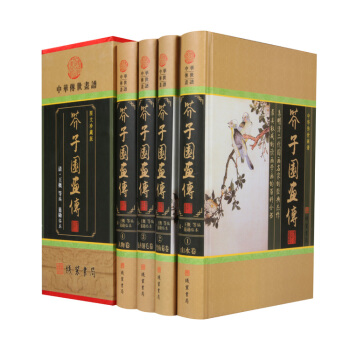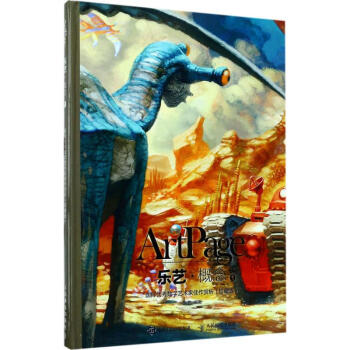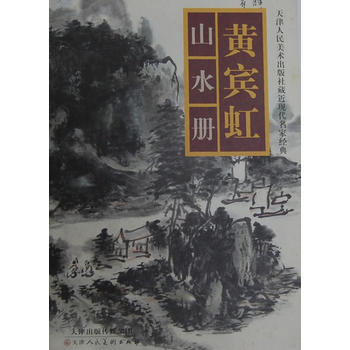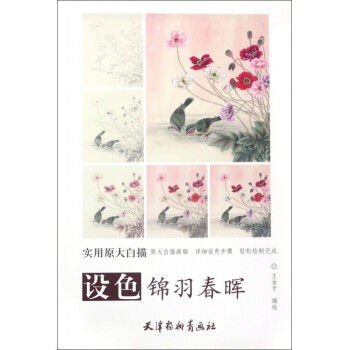

具体描述
基本信息
- 商品名称:设色锦羽春晖/实用原大白描
- 作者:编者:王金才
- 定价:42
- 出版社:杨柳青
- ISBN号:9787554706411
其他参考信息(以实物为准)
- 出版时间:2017-06-01
- 印刷时间:2017-06-01
- 版次:1
- 印次:1
- 开本:8开
- 包装:平装
- 页数:24
内容提要
王金才编绘的这本《设色锦羽春晖》所绘内容极 为贴合“锦羽春晖”的主题,书中花卉有芍药、虞美 人、辛夷花、桃花、水仙花、鸢尾花、迎春花、杜鹃 花、玉兰花、梨花、牡丹等,禽鸟有燕子、斑鸠、绶 带、葵花鹦鹉、麻雀、鹌鹑、翠鸟、绣眼鸟、鸽子、 红点颏鸟等,线描与彩图步骤结合,多动态展示,注 重基础讲述。以小品形式出发,多角度、图文结合地 展示了构图、布局、花、鸟搭配等,寓意吉祥,受众 面广,实用性强,是定位于实用性层面的基础类绘画 临摹书籍。
作者简介
王金才,沧州人,1974年生,中国美术家协会会员,中国工笔画学会会员,北京工笔重彩画会会员,作品多次参加中国美术家协会及省市级展览并获奖。
目录
正文
用户评价
The title itself, “设色锦羽春晖/实用原大白描,” is incredibly evocative, promising a rich and detailed exploration of traditional Chinese painting. The combination of “设色锦羽春晖” conjures an immediate vision of vibrant colors, exquisite feathers, and the warm glow of springtime. It speaks to the artistic aspiration, the desire to capture beauty and emotion. Simultaneously, “实用原大白描” grounds this aspiration in practical learning. As someone who has a deep appreciation for the meticulous detail and refined aesthetics of gongbi painting, I’ve often found myself wishing for more accessible and comprehensive instructional materials. The “原大白描” component is particularly exciting. It suggests that the book will provide full-sized, unadulterated white drawings, allowing for direct study of the artist’s linework, proportion, and composition. I imagine this section offering a diverse range of subjects, from the delicate forms of flowers to the dynamic poses of birds, all rendered with exceptional clarity. I am particularly keen to understand the techniques behind these masterful white drawings – how different textures are conveyed through linework, how volume is suggested, and how the subtle interplay of lines creates a sense of life and movement. The “设色” section, especially with the emphasis on “锦羽,” suggests a thorough examination of color application for bird feathers. I hope to find detailed explanations on layering colors, creating subtle gradations, and achieving realistic textures that capture the sheen and depth of feathers. The concept of “春晖” implies an understanding of how to use color to evoke a specific atmosphere – in this case, the warmth and radiance of spring sunlight. I look forward to learning how to translate this abstract concept into tangible color choices and applications, creating a painting that truly embodies the spirit of spring. This book, I anticipate, will be more than just a guide; it will be an immersive experience, offering a profound understanding of both the technical and artistic dimensions of traditional Chinese painting.
评分拿到这本书,我眼前一亮,就被它名字中蕴含的意境所吸引。“设色锦羽春晖”——这名字本身就充满了诗意和画意,仿佛一幅色彩斑斓、生机勃勃的画卷在我眼前展开。我一直对中国传统绘画,尤其是工笔花鸟画有着浓厚的兴趣,但苦于缺乏系统性的学习资源。“实用原大白描”这个副标题,更是让我惊喜万分,它精准地击中了我的学习痛点。我始终认为,线条是中国画的骨骼,白描是学习中国画最基础、也是最重要的一环。而“原大”二字,意味着我能够获得的是最接近真实尺寸的白描稿,这将极大地便利我的临摹和学习。我设想,书中会收录大量高质量的白描图稿,它们或许是历代名家的经典之作,又或许是当今名家精心创作的素材。我希望能在这部分内容中,不仅看到精美的线条,更能感受到线条背后的功力——如何用笔的顿挫、提按,如何勾勒出物体的轮廓、肌理和神韵。我尤其期待书中能够有关于白描技法的详细讲解,比如如何处理不同物体的线条,如何表现动物的毛发、羽毛,植物的叶脉、花瓣等等。而“设色”部分,更是让人充满遐想。“锦羽”二字,暗示着书中可能包含大量关于鸟类的描绘。我非常好奇,当那些精妙的白描线条遇上五彩斑斓的色彩,会碰撞出怎样的火花?书中是否会提供详细的设色步骤,从底层的渲染到表层的点染,如何运用色彩的浓淡、干湿、冷暖来表现羽毛的层次感、光泽感和立体感?“春晖”二字,则将整个画作的意境提升到了更高的层次。它不仅仅是关于色彩的运用,更是关于如何通过色彩来营造出温暖、明媚、充满生机的春日氛围。我希望书中能够指导我如何运用色彩来表现阳光的温暖,春风的拂动,以及万物复苏的喜悦。这本书,对我而言,不仅仅是一本绘画教程,更像是一次对中国传统艺术的探索之旅,我期待着在这本书的陪伴下,能够不断提升自己的绘画技艺,创作出属于自己的“春晖”。
评分拿到这本书,我immediately felt a sense of anticipation, like opening a treasure chest. The title, “设色锦羽春晖/实用原大白描,” immediately conjures up vivid imagery. “设色锦羽春晖” itself paints a picture of colorful, radiant feathers bathed in the warm light of spring. As a long-time admirer of traditional Chinese painting, particularly gongbi (meticulous brushwork), I've often struggled to find resources that bridge the gap between appreciating masterpieces and actually creating them. Many books offer theoretical explanations that are hard to grasp, or provide simple copies of artwork without adequate guidance. However, the subtitle, “实用原大白描” (Practical Original Size White Drawings), is precisely what I've been looking for. It suggests that the book contains high-quality white drawings that are reproduced at their original scale, which is invaluable for learning. I envision this section featuring a rich collection of meticulously drawn outlines, perhaps of various birds, flowers, or even landscapes. More importantly, I hope for detailed explanations on white drawing techniques – how to vary line weight, create texture, and convey form through simple yet powerful strokes. The “设色” (color application) part is where my true excitement lies. The mention of “锦羽” (colorful feathers) leads me to believe there will be in-depth instruction on coloring bird plumage. I'm eager to learn about the layering of colors, the blending techniques, and how to achieve the shimmering, three-dimensional effect of feathers. The concept of “春晖” (spring sunshine) suggests a focus on atmosphere and mood. I hope the book will guide me on how to use color to evoke the warmth of sunlight, the vibrancy of spring, and the overall feeling of renewal. This book, in my eyes, promises to be a comprehensive guide, offering a pathway from foundational drawing skills to sophisticated coloring techniques, and ultimately, to capturing the very essence of spring.
评分From the moment I saw the title, "设色锦羽春晖/实用原大白描," I felt a strong pull towards this book. The first part, "设色锦羽春晖," paints a picture of vibrant colors, exquisite feathers, and the warm, life-affirming radiance of spring. It’s an image that resonates deeply with my love for traditional Chinese art. The second part, "实用原大白描," immediately tells me that this isn't just a book of pretty pictures; it's a practical guide. The term "原大" (original size) is particularly appealing. It implies that the white drawings within will be presented at their actual scale, allowing for accurate study of proportions and linework. This is incredibly valuable for anyone serious about learning. I'm picturing pages filled with meticulously rendered outlines of birds, their feathers incredibly detailed, or perhaps delicate floral arrangements. I’m hoping for explanations that go beyond simply tracing the lines, detailing the nuances of brush control, how to achieve different textures with varying strokes, and how to imbue the drawings with a sense of life and form. The "设色" aspect, particularly in relation to "锦羽," excites me immensely. Depicting the intricate beauty of bird feathers is a hallmark of gongbi painting, and I'm eager to learn the techniques for achieving that richness and depth of color. I envision step-by-step instructions on layering, blending, and highlighting to create the illusion of soft, lustrous plumage. The "春晖" element suggests capturing the essence of spring light and atmosphere. I'm looking forward to understanding how to use color palettes and tonal variations to evoke the warmth and joy of a spring morning. This book, I feel, is designed to be a comprehensive journey, guiding the reader from the foundational skills of white drawing to the sophisticated application of color, all while capturing the evocative beauty of nature.
评分第一眼看到这本书的名字,我就被它深深吸引了。“设色锦羽春晖”——这名字自带画面感,仿佛能闻到春天的气息,看到五彩斑斓的羽毛在阳光下闪耀。“实用原大白描”更是直击人心,它承诺的是实实在在的学习价值。我一直是中国传统绘画的爱好者,尤其是工笔画,那种细腻、雅致的风格让我着迷。但说到实践,往往感到无从下手。市面上的教程,要么过于理论化,让人云里雾里,要么就是一些简单的临摹素材,缺乏系统指导。“原大白描”这几个字,让我看到了希望。我理解,它意味着书中有直接按照原作尺寸绘制的白描稿,这对于我这样的初学者来说,简直是福音。我期待书中能够包含丰富多样的白描素材,比如各种形态的禽鸟,姿态各异的花卉,甚至是山石、树木等。更重要的是,我希望能有详细的白描技法讲解,比如如何根据物体的不同部位,选择不同的线条来表现其形态和质感,如何通过线条的粗细、虚实、刚柔来传达物体的生命力。我尤其好奇“锦羽”部分的描绘,鸟类羽毛的细腻和色彩的丰富,一直是工笔画的难点和重点。我希望书中能够有详细的设色步骤,演示如何通过层层渲染、晕染、提染等技法,将白描的线条转化为逼真而富有层次感的羽毛。如何运用色彩的冷暖、明暗、纯度来表现羽毛的光泽和立体感,是我非常想学习的部分。“春晖”则是一种意境的升华,它不仅仅是关于技巧,更是关于情感的表达。我希望书中能指导我如何通过色彩的搭配,画面的整体构图,来营造出春天阳光普照、万物生长的温暖而充满活力的氛围。这本书,在我看来,是一本集艺术性与实用性于一体的珍贵宝典,我期待它能成为我绘画道路上的一位良师益友。
评分The very name of this book, "设色锦羽春晖/实用原大白描," speaks volumes about its potential content. It evokes a sense of refined artistry blended with practical learning. As someone who has long been captivated by the beauty and intricacy of traditional Chinese painting, especially the gongbi style, I’ve often found myself yearning for resources that offer more than just aesthetic appreciation. The phrase “实用原大白描” particularly resonates with me. The idea of “原大” (original size) white drawings suggests that I’ll be able to study the foundational linework of renowned pieces, or expertly crafted examples, without the distortion of scaling. This is crucial for understanding the nuances of brushstrokes, the flow of the lines, and the structural integrity of the composition. I anticipate that this section will provide a wealth of meticulously rendered line art, perhaps showcasing a variety of subjects from delicate flowers to majestic birds, all rendered with clarity and precision. I am eager to delve into the explanations of how these lines are achieved – the different types of strokes, the subtle variations in pressure and speed, and how they collectively contribute to the overall form and texture of the subject. The “设色” (color application) aspect, particularly in relation to “锦羽” (colorful feathers), hints at advanced techniques for depicting the vibrancy and complexity of bird plumage. I hope to find detailed, step-by-step guides on how to build up colors, create depth and sheen, and differentiate between various types of feathers. The term “春晖” (spring sunshine) suggests a focus on capturing the ethereal quality of light and the overall mood of springtime. I look forward to learning how color choices and application can be used to convey warmth, luminosity, and the sense of burgeoning life that characterizes spring. This book, I believe, is poised to be an invaluable companion for anyone seeking to master the art of gongbi painting, offering a comprehensive journey from foundational linework to the evocative power of color.
评分拿到这本书,我真的有一种捧着宝贝的感觉。封面上的“设色锦羽春晖”几个字,就已经带着一种古朴而又鲜活的生命力,让我迫不及待地想翻开它。拿到手里,纸张的触感温润,厚实而富有韧性,不像有些书那样轻飘飘的,有一种沉甸甸的实在感,这让我对里面的内容充满了期待。我一直对中国传统绘画,尤其是工笔画有着浓厚的兴趣,但往往市面上的一些教程要么过于理论化,让人望而却步,要么过于碎片化,难以形成完整的体系。这本书的副标题“实用原大白描”更是点睛之笔,它直接击中了我最核心的需求:实用性和学习的便捷性。我一直觉得,很多时候学画就像学写字一样,基础的线条功底至关重要,而“原大白描”的字样,让我仿佛看到了无数细腻精美的线条在眼前铺展开来,我可以直接对照学习,感受大师们运笔的力度、速度和神韵。书中是否会收录那些经典的、历代流传下来的珍贵白描稿?这让我充满了好奇。如果能有对这些白描稿的详细解析,比如线条的粗细变化、勾勒的顺序、以及如何表现物体的体积感和质感,那将是多么宝贵的学习资源。我设想着,翻开书页,映入眼帘的会是那些栩栩如生的花鸟、山水,或是人物,它们以最纯粹的黑白线条呈现,等待着我们用色彩去赋予它们生命。我尤其期待书中关于如何“设色”的部分,毕竟“春晖”二字,本身就充满了色彩的意象。从“锦羽”这个词,我猜想书中可能会有关于禽鸟的描绘,那些斑斓的羽毛,如何在白描的基础上,通过设色来展现其光泽、层次和立体感,这是工笔画的魅力所在。同时,“春晖”也让我联想到春天生机勃勃的景象,那些嫩绿的叶片,娇艳的花朵,温暖的阳光,这些元素的色彩表现,如果能有详细的步骤和技巧讲解,对我来说将是巨大的帮助。这本书,我感觉它不仅仅是一本绘画教程,更像是一扇通往中国传统艺术殿堂的窗户,让我能够近距离地欣赏和学习那些凝结了古人智慧与匠心的艺术瑰宝。我希望能在这本书中找到属于自己的学习路径,从基础的白描开始,一步步走向设色的世界,最终能够创作出属于自己的“春晖”。
评分这本书的名字“设色锦羽春晖/实用原大白描”,光是读起来就有一种非常诗意的感觉,仿佛能闻到淡淡的花香,看到温暖的阳光洒在色彩斑斓的羽毛上。作为一名绘画爱好者,我一直在寻找能够真正提升我绘画技艺的书籍,尤其是在中国传统绘画领域。很多市面上的教程,要么太过抽象,讲一些我听不懂的理论,要么就是一些简单的临摹素材,缺乏系统的指导。但是“实用原大白描”这几个字,让我眼前一亮。它暗示着书中会有大量可以直接使用的、并且是按照真实尺寸绘制的白描稿。这意味着我不需要花费大量的时间去构图或者放大缩小,可以直接拿到画稿,专注于线条的练习和细节的捕捉。我一直觉得,线条是中国画的灵魂,尤其是白描,更是基础中的基础。如果这本书能提供高质量的原大白描稿,那对我来说简直是福音。我希望书中能够包含各种各样的题材,比如各种姿态的飞鸟,写实的植物,甚至是人物的白描。并且,在讲解白描部分的时候,不仅仅是简单的线条勾勒,还能有关于用笔的技巧,比如如何根据物体的形态和质感来调整线条的粗细、虚实和力度。这一点非常重要,因为相同的线条,不同的处理方式,会呈现出完全不同的视觉效果。而“设色锦羽春晖”这个部分,则让我对后续的色彩运用充满了期待。我非常好奇,当这些精美的白描稿被赋予色彩之后,会呈现出怎样的惊艳效果。书中是否会有关于色彩搭配的讲解?比如,如何根据物体的固有色,结合季节、光照和整体氛围来选择和运用色彩?特别是“锦羽”这个词,让我联想到那些色彩丰富、层次分明的禽鸟羽毛。我希望书中能够有详细的步骤,演示如何通过设色来表现羽毛的绒感、光泽以及不同羽片之间的叠加关系。而“春晖”,则是一种温暖而充满生命力的意境,这不仅仅是色彩的堆砌,更是情感的表达。我希望这本书能够教会我,如何通过色彩来传达出春天的勃勃生机和美好的寓意。我设想,这本书会是我案头上的一位良师益友,指引我一步步从线条的纯粹走向色彩的斑斓,最终让我能够创作出充满“春晖”意境的作品。
评分这本书的名字,从“设色锦羽春晖”到“实用原大白描”,本身就透露着一种从意境到实操的完整性。我一直觉得,一本书如果能做到既有高远的艺术追求,又不失扎实的教学功底,那它一定是值得仔细品读的。拿到手里,首先让我感受到的是纸张的质感,它厚实而富有弹性,印刷色彩清晰,细节呈现到位,这让我对书中内容的专业性有了初步的信心。我一直对中国传统的工笔花鸟画有着深厚的感情,但真正实践起来,却常常感到力不从心。市面上有很多描摹古画的书籍,虽然可以学习其造型,但缺乏对基本技法的系统讲解。“实用原大白描”这几个字,恰恰是我一直以来寻找的。我理解,“原大”指的是尺寸与原作一致,这意味着我学习时可以直接对照,感受原作的比例和结构,而“白描”则是功底的体现。我非常期待书中能有对不同题材(比如花卉、禽鸟)的白描勾勒方法有详细的阐述,不仅仅是简单的线条描摹,更希望能够深入到用笔的技巧,如何根据物体的结构和质感来调整线条的粗细、虚实、力度,以及如何运用“十八描”等传统技法来表现不同的效果。而“设色”部分,则是我学习的另一个重点。我猜想,书中会围绕“锦羽”这个主题,详细讲解如何为鸟类的羽毛进行设色。这需要对色彩的理解,对光影的把握,以及对不同羽毛质感的表现。我希望能有循序渐进的色彩晕染、叠加、提染的步骤分解,让我能够理解色彩是如何层层叠叠地呈现在纸上的,最终达到“锦羽”那种丰富而自然的色彩效果。而“春晖”则是一种意境,一种温暖而充满生命力的感觉。我希望书中能教会我如何通过色彩的搭配,光线的处理,以及画面的整体布局,来营造出春日阳光普照,万物复苏的勃勃生机。总而言之,我期待这本书能够提供一个从基础的线条功底到高阶的色彩表现,再到最终意境的营造的全方位学习路径,让我在掌握绘画技艺的同时,也能领略到中国传统艺术的魅力。
评分我拿到这本书时,第一感觉就是它承载着一种沉甸甸的、充满艺术气息的重量。封面上“设色锦羽春晖”几个字,带着一种古典的韵味,而“实用原大白描”则直接表明了它的学术性和实践性。“春晖”二字,让我立刻联想到春天明媚的阳光,万物复苏的景象,充满了生机和色彩。而“锦羽”则勾勒出飞鸟身上那绚丽的羽毛,色彩斑斓,层次丰富。我一直对中国传统的工笔花鸟画情有独钟,但往往市面上的教程要么过于基础,缺乏深度,要么就是一些名家作品集,虽然欣赏价值极高,但对于学习者来说,缺乏直接的指导意义。“实用原大白描”这个定位,则正是我一直在寻找的。原大的白描稿,意味着我可以非常直观地对照学习,感受每一根线条的力量、曲折和韵味,而无需为缩放比例而烦恼。我非常期待书中能够收录一些高质量的、具有代表性的白描作品,并且能够对这些白描稿进行详细的讲解。比如,线条的粗细变化如何表现物体的体积感和质感?如何运用虚实、浓淡来区分远近和层次?这些都是我一直困惑的难题。我猜想,书中可能会有一些关于“骨法用笔”的阐释,以及如何通过线条来捕捉物体的神韵。而“设色”的部分,更是让我充满期待。我希望书中不仅仅是讲解如何调色、配色,更重要的是如何将白描的线条与色彩巧妙地结合起来,让色彩为线条注入生命,让线条为色彩提供骨架。特别是对于“锦羽”的设色,我希望能有详细的步骤演示,如何一层层地叠加色彩,如何表现羽毛的光泽和质感,如何通过色彩的冷暖对比来突出物体的立体感。而“春晖”的意境,则需要通过整体的色彩氛围来营造。我希望书中能够指导我如何运用色彩来表现阳光的温暖、春风的轻柔、以及万物的生机勃勃。这本书,对我来说,不仅仅是一本学习资料,更像是一次与中国传统绘画艺术的深度对话,我希望能在这本书的引导下,将我心中的“春晖”描绘出来。
相关图书
本站所有内容均为互联网搜索引擎提供的公开搜索信息,本站不存储任何数据与内容,任何内容与数据均与本站无关,如有需要请联系相关搜索引擎包括但不限于百度,google,bing,sogou 等
© 2025 book.idnshop.cc All Rights Reserved. 静思书屋 版权所有


